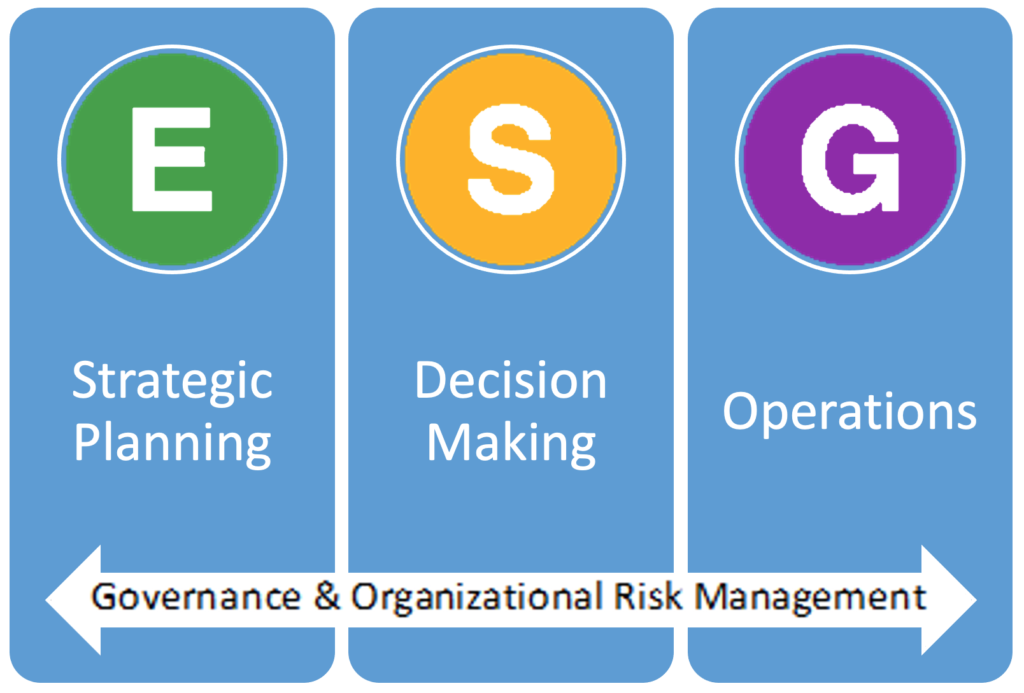The importance of ‘G’ in ESG: Perspectives from Telus sustainability leader, Geoff Pegg

Having been recognized in 2021 as one of Canada’s Clean50 for the second time (2018) has given me pause to reflect on the approaches I have taken to help TELUS become a global leader in sustainability and social capitalism over the past decade.
Increasingly, customers, investors and employees want to associate their own personal or organizational brand with companies who are strong performers when it comes to ESG (Environmental, Social, and Governance) issues when making their purchasing, investment and employment decisions. Leading companies in this regard understand the many opportunities ESG leadership presents. Part of understanding these opportunities is the result of first looking at ESG issues through a ‘risk’ lens, ensuring that when casting a glance inward, there are robust governance practices to go along with the environmental and social objectives, action plans and associated outcomes determined by organizational strategies. It is critical to not forget the ‘G’ when taking action on the ‘E & S’.
Across many industries, the importance of ESG, and governance with respect to the many ESG risks, is on the rise. Not a day goes by when executives, board members, customers, investors, employees, analysts and many other organizational stakeholders aren’t asking questions with respect to climate, diversity, equity and inclusion, human rights, security and privacy – the list goes on.
Here are some approaches that organizations can take to let stakeholders know that when taking action on environmental and social issues, they are implementing requisite governance on these important topics:
Advocate
In order to start ‘walking the talk’ when it comes to sustainability governance, organizations should envision governance as a foundational component to strong ESG performance – a platform or framework from which opportunities grow. ESG experts within the organization should advocate for this ‘governance as a foundation’ mindset in strategic planning, decision making, and operational processes. Embedding ESG issues into existing organizational risk management processes help build this ‘G’ foundation.
In the aforementioned strategic planning sessions, when monitoring business, regulatory or other global risk developments (such as COVID-19), it is important that requisite teams ask questions about required due diligence and advocate for taking action to build grit and resilience into organizational practices, particularly when it comes to ESG issues.
If it is determined that strong ESG performance is a market differentiator, in the competition for customers and employees, for example, advocating for a structural approach to decision making, particularly when it comes to marketing decisions, is imperative. When drawing attention to ESG performance, will it pass the test?

Educate and communicate
Part of good governance is having a common and broad understanding of strategies and definitions when it comes to organizational ESG/sustainability/CSR/social purpose issues and performance. This is critical when educating and communicating with stakeholders. It is critical when educating internal teams on the organization’s definitions. Determining and prioritizing which stakeholder group or groups you are communicating to also informs how and what you want or need to communicate and whether or not this communication needs an educational component.
Many organizations share their ESG strategies, and progress on any associated action plans and KPIs, through an ESG report and/or website of some kind. In terms of education, a common piece of content found within such reports is how the organization approaches stakeholder engagement, materiality – understanding the ESG issues that are important to the organization and its stakeholders – and issue prioritization. In addition to describing any relevant context for each ESG issue, these steps are best practices in governance when it comes to developing ESG strategies and reporting; this can also identify emerging ESG opportunities and risks. Leading companies have ESG reports reviewed by a disclosure committee and/or Board (if applicable) to ensure alignment with other communications and disclosure, such as financial reports, and to provide guidance on the approaches and content of such reporting.
Having relevant ESG data points that are referenced within these reports assured by an independent third party is also a best practice in terms of governance. It helps build trust with the intended audience. Aligning relevant ESG KPIs with globally adopted goals such as the Sustainable Development Goals (SDGs), frameworks such as the Task Force on Climate-related Disclosure (TCFD), or industry-specific issues like those identified by the Sustainability Accounting Standards Board (SASB), are also seen as a good governance practice from a communication and education point of view.
Effective governance is best reflected in ensuring stakeholders understand both the opportunities and challenges the organization faces by creating balanced communications and reports. Effective ESG communication and education avoids marketing-type language, is transparent, and is relevant for the intended audience.
Integrate
Once a governance foundation is created and an ESG strategy is developed and communicated to relevant stakeholders, it is important to begin integrating ESG considerations into the organization’s operations. Building business cases used in strategic planning and decision-making should consider environmental and social impacts along with financial impacts. Examples include considering how the organization’s investments impact energy use (and the associated GHG emissions) or create positive social benefits such as improved access to needed community services. These types of considerations help build a healthy ESG governance foundation.
To enable employees and teams to maintain the focus on ESG, linking ESG performance and outcomes to pay is a best practice in ESG integration, and is increasingly a component used by ESG rating agencies and analysts when developing methodologies to review an organization’s ESG performance. Similarly, integrating ESG issues into an organization’s values, mission statement, or policies can positively influence employees day to day work practices.
Another effective ESG integration tactic is to develop or hire ESG subject matter experts in areas of the organization such as finance, procurement and sales. Corporate governance teams and boards now increasingly identify ESG skills as necessary to help guide organizations to meet stakeholder needs. Conducting a skills gap analysis can help identify areas of an organization where ESG strengths and opportunities exist, and can also uncover any internal best practices that can be shared.
Collaborate
After identifying, learning and sharing best ESG governance practices internally, why not share them with external stakeholders? Through collaboration with industry associations, NGOs, charitable organizations and others, sharing lessons learned can be an effective way that organizations can increase credibility and build trust with other organizations, suppliers, and customers to increase the adoption of good ‘G’ practices.
Many individuals, groups and organizations often just need some inspiration to get started when it comes to addressing ESG risks and opportunities. Can this be your organization?
Such a team deserving thanks is the Delta Management Group, for continuing to raise awareness on the many ESG issues, best practices and individuals and teams taking action on ESG matters facing Canadians as we strive to enhance our clean economy.














